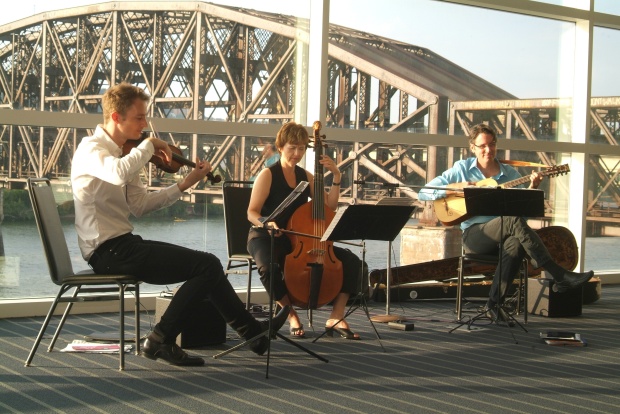Tweets, Texts and Tchaikovsky: Live Concerts for a Contemporary Audience

By Marc Giosi
When famed 19th-century Russian pianist Anton Rubinstein performed in New York in May of 1873, he gave seven different concert programs over nine evenings. Said to have covered the entire history of piano music (until that point), one evening’s program alone consisted of eight Beethoven sonatas, practically three hours of music! (We don’t even know if he took all of Beethoven’s suggested repeats, or how many encores he performed). While this sounds almost like a superhuman feat today, concerts of that length were quite common over a century ago.
Fast-forward 138 years. In an age of streaming internet video, text messages and 140 character Tweets, how can live classical music appeal to today’s audience? Get two concert presenters in a room together and the topic will always land on disappearing audiences and declining ticket sales. Is the live concert dead? Or is the live concert, as Anton Rubinstein knew it, simply over?
“Put it in context.” Maybe part of this problem is a matter of approach and the context in which classical music is presented. “Music in any chamber” is the motto for the Chiara String Quartet, artists-in-residence at the University of Nebraska-Lincoln, which has been on the forefront of a movement to bring classical music into alternative spaces. Bars, nightclubs, art galleries; no space is off limits for this group. The same intensity and artistic integrity is brought to a performance in a bar as it would be in a concert hall.
Walking into a concert hall comes with certain protocols that can be off-putting or even intimidating to a young adult (What do I wear? When do I applaud? What if I need to cough?) What 21 year-old isn’t comfortable strolling into a neighborhood bar to catch a local band performing? And why can’t that band be replaced by a string quartet playing Mozart?
“Less is more.” You can watch a commercial free episode of ABC’s hit show “Modern Family” on Netflix at this very moment and it will take 22 minutes of your time. Or, in almost the same exact same timeframe you can listen to Beethoven’s final string quartet, Opus 135. There is a misconception that classical concerts are long, never ending affairs (and in Rubinstein’s time that was certainly true!) Why not shorten concerts to be better attuned to today’s fast-paced society? An ensemble could choose two masterpieces from the repertoire, include a pre-performance chat and a brief intermission all in about an hour.
“When to start.” 8 o’clock has become the standard start time for most performances. This too can be experimented with to try and attract new or different audiences. A great example is the New York Philharmonic’s Rush Hour concert series. Concerts begin at 6:45 and are marketed towards working professionals who want to catch a great concert after they leave the office while at the same time avoiding rush hour traffic home. Another wonderful example is Columbia University’s popular Lunchtime Concert Series. Geared towards campus staff, students and local residents, these concerts start at 12:30 and last about an hour. Attendees are encouraged to bring their lunch and break up their day with an outstanding live performance. Both series are wildly popular and see huge numbers in attendance.
None of these recommendations would even cost a presenter more money (the bottom line is always to number one priority). They’re just a matter of risk taking, and trusting that your audience will follow, and a new audience will be found.
Marc Giosi is the Executive Director of Chatham Baroque.
To return to the table of contents for our issue Chamber Music, and view more articles, click here.
The Muse Dialogue is sharing the video below, for those interested in learning more about Chatham Baroque, their musicians, and their perspective on bringing period music to contemporary audiences.
For related articles from The Muse Dialogue:
Period Chamber Music: Museum Piece or Modern Performance?











